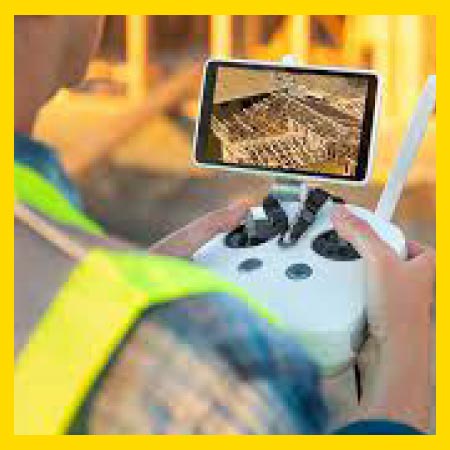Currency
January 05, 2023

Silver Spring, MD — As the use of drone technology in the construction industry expands, so too do safety concerns related to worker distraction and potential collisions while operating at height.
That’s the conclusion of researchers from CPWR – The Center for Construction Research and Training, who in a recent study analyzed the behaviors of 153 participants “with varying construction experience” in a virtual construction site.
Findings show that working with or near drones, or unmanned aerial vehicles, “reduces the attention workers devote to the task at hand, which could result in falls when they are at height.” Workers operating while drones were 12 and 25 feet away looked away from job tasks more frequently than when drones were 1.5 and 4 feet away.

Additionally, working with drones at any distance contributes to “significant” psychological or emotional distress. Workers may feel as though they’re constantly being monitored. They also might be fearful of being struck by a drone, as they already operate in high-risk environments at height.
A 2021 survey conducted by Dodge Data & Analytics in partnership with CPWR, among other organizations, found that 37% of construction contractors use drones on worksites, while an additional 6% anticipated future use. Still, the study concluded that construction workers “generally have a negative attitude” toward working with or near drones.
To help ensure safe integration of drones in construction, CPWR advises employers to:
CPWR also suggests using the Hierarchy of Controls to assist with hazard prevention. When possible, schedule work so employees aren’t present in areas in which drones are operating. Use drones only for operations that provide “significant benefits” over traditional work methods, and isolate workers from drones when no substitute for drone use exists.
That’s the conclusion of researchers from CPWR – The Center for Construction Research and Training, who in a recent study analyzed the behaviors of 153 participants “with varying construction experience” in a virtual construction site.
Findings show that working with or near drones, or unmanned aerial vehicles, “reduces the attention workers devote to the task at hand, which could result in falls when they are at height.” Workers operating while drones were 12 and 25 feet away looked away from job tasks more frequently than when drones were 1.5 and 4 feet away.

Additionally, working with drones at any distance contributes to “significant” psychological or emotional distress. Workers may feel as though they’re constantly being monitored. They also might be fearful of being struck by a drone, as they already operate in high-risk environments at height.
A 2021 survey conducted by Dodge Data & Analytics in partnership with CPWR, among other organizations, found that 37% of construction contractors use drones on worksites, while an additional 6% anticipated future use. Still, the study concluded that construction workers “generally have a negative attitude” toward working with or near drones.
To help ensure safe integration of drones in construction, CPWR advises employers to:
- Train workers. “There are currently no specific OSHA standards or guidelines regarding UAVs on construction sites, so training workers is even more critical. The training content needs to be developed to not only educate workers about UAVs, but also help familiarize them with working alongside UAVs.” CPWR says virtual reality training carries multiple benefits and may help workers view drones “less negatively.”
- Design drones to “limit the frequency and severity of risks” they pose to workers and minimize crash impact.
- Prepare worksites to ensure drones “work efficiently and safely around workers,” accounting for factors that include drone size and shape, flight path, and weather conditions.
CPWR also suggests using the Hierarchy of Controls to assist with hazard prevention. When possible, schedule work so employees aren’t present in areas in which drones are operating. Use drones only for operations that provide “significant benefits” over traditional work methods, and isolate workers from drones when no substitute for drone use exists.









